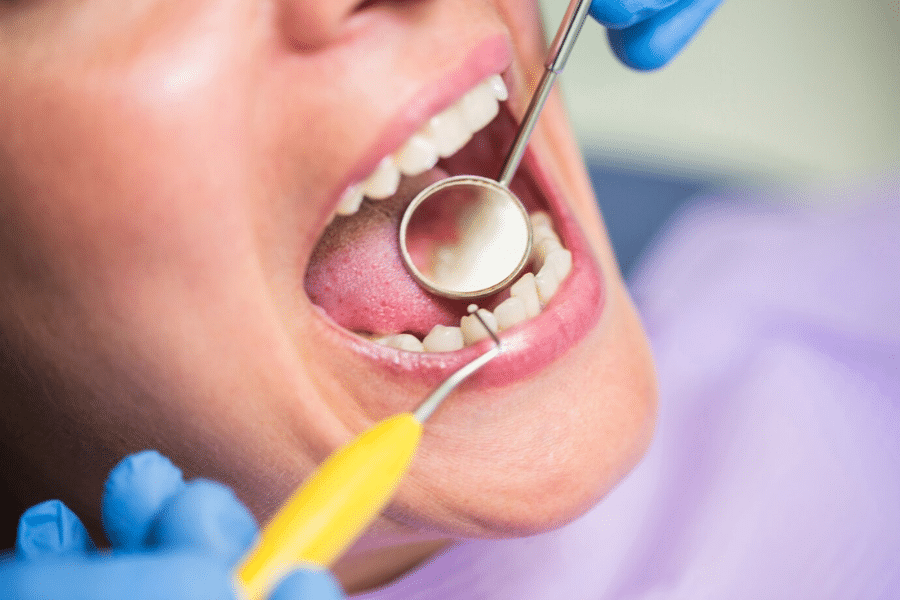Mercury fillings, also known as dental amalgam, have been a common choice for cavity treatment for over a century. However, concerns about the safety of mercury exposure have led to a growing interest in mercury-free dentistry. Understanding the risks associated with mercury fillings and the benefits of mercury-free alternatives is essential for maintaining optimal oral health.
The Dangers of Mercury Fillings
Dental amalgam fillings are made up of 50% mercury. This mercury slowly evaporates from fillings over time. Studies show that people with more amalgam fillings have higher mercury levels in bodily fluids and tissues like urine, blood, saliva, brain, liver, and kidneys. It has also been found that it has led to higher mercury levels passed to the fetus and newborn through the placenta, amniotic fluid, umbilical cord, and breast milk.
Mercury exposure has been linked to various health issues, including neurological problems, kidney damage, and autoimmune disorders. While the levels of mercury released from fillings are generally considered safe for most people, there is still a risk of adverse effects, especially with long-term exposure. Some individuals may be allergic to mercury or other components of dental amalgam. This can lead to oral discomfort, gum irritation, or even more severe allergic reactions. Improper disposal of mercury-containing dental waste can lead to environmental contamination. Mercury can accumulate in soil and water sources, affecting wildlife and potentially entering the food chain.
Based on data from the early 2000s, over 180 million Americans have around 1.5 billion dental fillings. Many of these are amalgam fillings containing mercury. Children as young as 26 months old have been found to have such fillings. The vaporization and accumulation of mercury from these widespread amalgam fillings are health concerns (Richardson et al., 2011).
Mercury is a toxic substance that can vaporize and be inhaled or absorbed into the body. Over time, mercury fillings can release small amounts of mercury vapor, especially when chewing or grinding teeth. Bruxism, commonly known as teeth grinding, and frequent chewing can significantly increase the release of mercury from amalgam fillings. This has raised concerns about the potential health risks associated with the use of amalgam in dental restorations. As a result, many experts recommend moving away from the use of amalgam and opting for less toxic materials for dental restorations. This shift not only reduces the risk of mercury exposure but also promotes overall oral health (Berlin, 2020).
How Mercury-Free Dentistry Can Help
Mercury-free dentistry offers alternative filling materials that do not contain mercury. These fillings are made from biocompatible materials such as composite resin, porcelain, or glass ionomer. These materials are safer and do not pose the same health risks as mercury fillings. Also, they can be matched to the color of your natural teeth, providing a more aesthetically pleasing result compared to silver amalgam fillings. Mercury-free dentistry is more environmentally friendly as it eliminates the risk of mercury contamination from dental waste.
Over the past decade, there has been a significant increase in the demand for tooth-colored restorations. This shift is primarily due to concerns about the appearance and safety of traditional dental amalgam fillings. Dental professionals now have three main categories of filling materials to choose from, one of which is composite fillings. Overall, the trend toward tooth-colored restorations reflects a growing emphasis on both the visual appeal and biocompatibility of dental materials, highlighting the importance of patient satisfaction and oral health outcomes (Butt et al., 2013).
The dangers of mercury fillings on oral health are a significant concern, highlighting the importance of mercury-free dentistry. By opting for mercury-free fillings, you can not only protect your health but also contribute to a safer and more sustainable dental care environment. Consult with your dentist to explore mercury-free options and make an informed decision about your dental health.
References
Richardson, G. M., Wilson, R., Allard, D., Purtill, C., Douma, S., & Graviere, J. (2011). Mercury exposure and risks from dental amalgam in the US population, post-2000. Science of the Total Environment, 409(20), 4257-4268.
Berlin, M. (2020). Mercury in dental amalgam: a risk analysis. Neurotoxicology, 81, 382-386.
Butt, N., Talwar, S., Chaudhry, S., & Nawal, R. R. (2013). Mercury free dentistry. Indian Journal of Dental Advancements, 5(2), 1186-1195.


